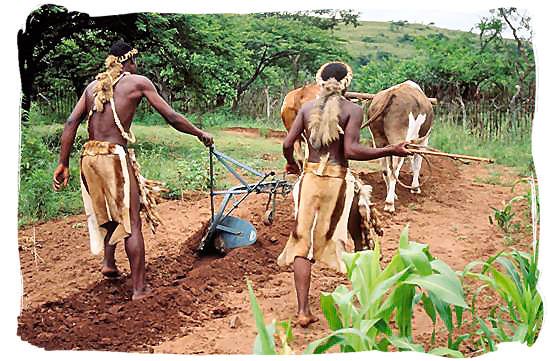Central African rain forest may have been transformed by Bantu farmers
The State Column | Sunday, February 12, 2012
 The Central African rain forest may have been transformed by Bantu farmers, according to a study published in the journal Science Thursday. While scientists continue to contend that climate change in Central Africa contributed to the transition from rain forest to savanna approximately 3000 years ago, the results of the study suggest that the migration of Bantu farmers across Central Africa also had a significant impact on the eventual disappearance of the Central African rain forest.
The Central African rain forest may have been transformed by Bantu farmers, according to a study published in the journal Science Thursday. While scientists continue to contend that climate change in Central Africa contributed to the transition from rain forest to savanna approximately 3000 years ago, the results of the study suggest that the migration of Bantu farmers across Central Africa also had a significant impact on the eventual disappearance of the Central African rain forest.The team of researchers began their research by looking at the process of chemical weathering. The team examined marine sediment samples from the Congo River. The researchers found that weathering patterns in Central Africa matched precipitation levels. However, the team found that approximately 3,000 years ago, the patterns of chemical weathering no longer matched precipitation levels.
“When we first took a look at the results, we were puzzled,” said Germain Bayon, the study’s lead researcher and a geochemist at the French Research Institute for Exploitation of the Sea, according to The Los Angeles Times.
After a thorough examination of the results, Mr. Bayon came to a controversial conclusion.
“Climate did play an important role in the arrival of agriculture,” Mr. Bayon posited, according to ScienceNOW. “But what we show is that the impact of those people developing and introducing agriculture probably had a quite significant impact on soil erosion,” Mr. Bayon added.
Not everyone in the scientific community is supportive of the study’s conclusion, including Katharina Neumann, an archaeobotanist at Goethe University in Germany.
“I was a strong defender of this theory that everything was shaped by humans and humans destroy the environment and so on,” argued Ms. Neumann, who was not involved in the study. “But the archaeological and paleological data from other areas — not just the rain forest — show that the impact of humans was much lower than we thought,” Ms. Neumann added.
However, other members of the scientific community have cheered the study’s conclusion. “This article presents a very elegant study showing that early Bantu farmers did indeed have an impact on the environment,” said Terry Brncic, a paleoecologist at the University of Oxford in the United Kingdom and the coordinator of the Central Africa Forest Project for the World Resources Institute in the Democratic Republic of the Congo. “I’ve been waiting for years for this kind of evidence,” added Mr. Terry Brncic.
Read more: http://www.thestatecolumn.com/articles/2012/02/12/central-african-rain-forest-may-have-been-transformed-by-bantu-farmers/#ixzz1mCyiAFpV

